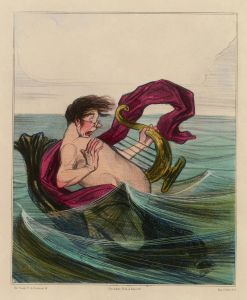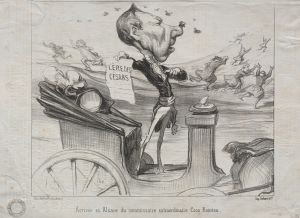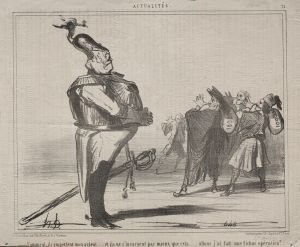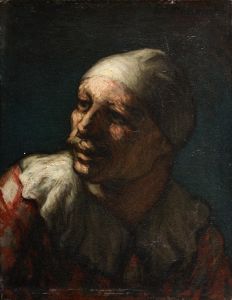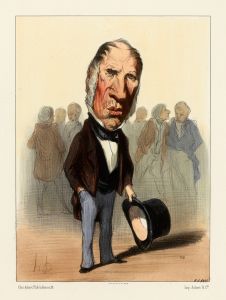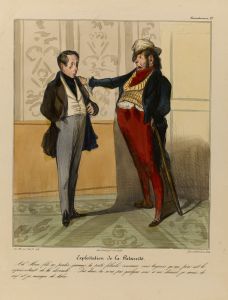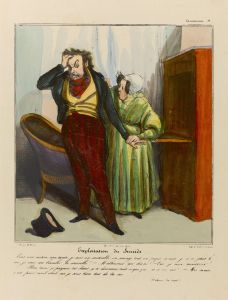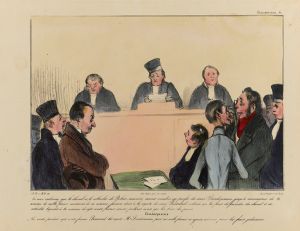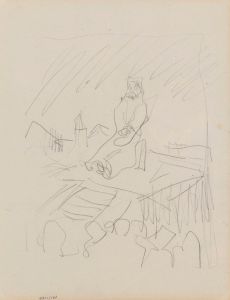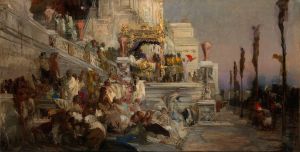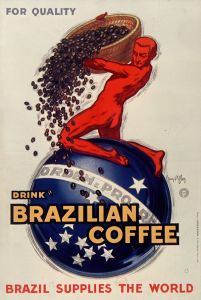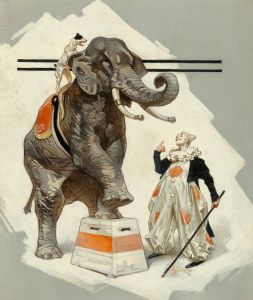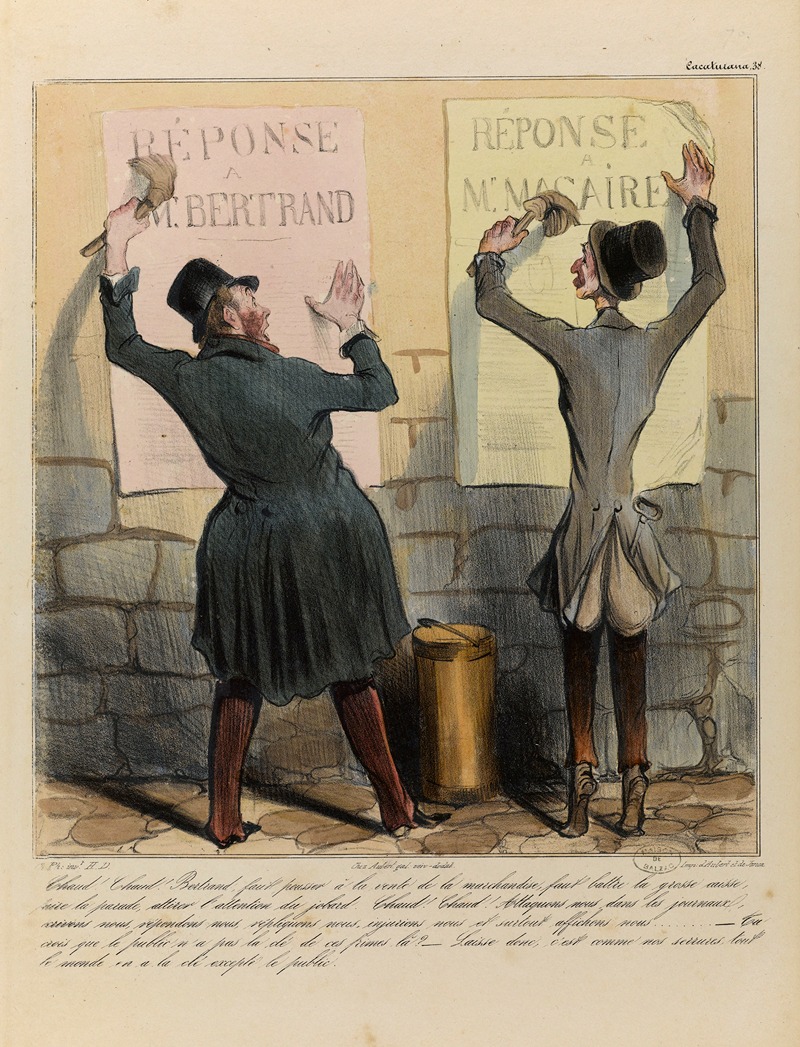
Chaud Chaud Bertrand faut pousser à la vente de la marchandise, faut battre la grosse caisse, faire la parade, attir
A hand-painted replica of Honoré Daumier’s masterpiece Chaud Chaud Bertrand faut pousser à la vente de la marchandise, faut battre la grosse caisse, faire la parade, attir, meticulously crafted by professional artists to capture the true essence of the original. Each piece is created with museum-quality canvas and rare mineral pigments, carefully painted by experienced artists with delicate brushstrokes and rich, layered colors to perfectly recreate the texture of the original artwork. Unlike machine-printed reproductions, this hand-painted version brings the painting to life, infused with the artist’s emotions and skill in every stroke. Whether for personal collection or home decoration, it instantly elevates the artistic atmosphere of any space.
Honoré Daumier, a prominent French printmaker, caricaturist, painter, and sculptor, created the artwork titled "Chaud Chaud Bertrand faut pousser à la vente de la marchandise, faut battre la grosse caisse, faire la parade, attir." Daumier was born on February 26, 1808, in Marseille, France, and he is best known for his satirical works that critique the social and political life of 19th-century France.
This particular piece, like many of Daumier's works, is a lithograph. Lithography was a popular medium during the 19th century, allowing for the mass production of images and making art more accessible to the public. Daumier mastered this technique and used it to produce a vast number of prints that were often published in newspapers and journals.
The title of the artwork, which translates to "Hot Hot Bertrand, you have to push the sale of the merchandise, you have to beat the big drum, do the parade, attract," suggests a scene of commercial promotion or street performance. This is consistent with Daumier's frequent focus on the everyday life of the common people and his interest in capturing the vibrancy and struggles of urban life.
Daumier's lithographs often featured exaggerated characters and humorous scenes that conveyed deeper social commentary. His work was heavily influenced by the political climate of his time, particularly the July Monarchy (1830-1848) and the subsequent Second French Republic. He was known for his critical eye and his ability to depict the absurdities and injustices of society with both wit and empathy.
In "Chaud Chaud Bertrand," Daumier likely employs his characteristic style of caricature, using exaggerated features and dynamic compositions to draw attention to the subject matter. The scene may depict a street vendor or performer, emphasizing the hustle and bustle of urban commerce and the lengths to which individuals would go to attract customers and make a living.
Daumier's work was not only popular among the public but also respected by his contemporaries and later artists. His keen observation and ability to capture the essence of his subjects have made his works enduring pieces of social commentary. Today, Daumier is celebrated for his contributions to both the art of caricature and the broader field of visual arts.
The exact date of creation for "Chaud Chaud Bertrand" is not specified, but it falls within the period when Daumier was most active in producing lithographs, roughly between the 1830s and 1870s. His works are held in numerous prestigious collections around the world, including the Louvre in Paris and the Metropolitan Museum of Art in New York.
Overall, "Chaud Chaud Bertrand faut pousser à la vente de la marchandise, faut battre la grosse caisse, faire la parade, attir" is a testament to Daumier's skill in capturing the spirit of his time through the medium of lithography, offering a glimpse into the lively and often challenging world of 19th-century urban life.





